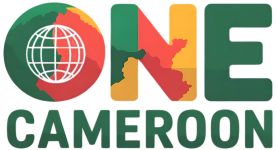Education is fundamental to Cameroon’s long-term development goals. With a population exceeding 28 million and over 250 ethnic groups, the government and private sector have invested significantly in expanding access to primary, secondary, and tertiary education. Despite progress, challenges persist: resource shortages, teacher-student ratio imbalances, and regional disparities. However, innovative approaches—including digital learning platforms and community-driven initiatives—are reshaping Cameroon’s educational landscape.
Cameroon operates a dual-language education system reflecting its Anglophone (Southwest and Northwest Regions) and Francophone (nine other regions) heritage. At the primary level, pupils receive instruction either in English or French, with English language classes introduced in the fifth year for Francophone pupils and vice versa. This bilingual policy aims to foster national unity and improve job prospects. However, disparities in resource allocation between Anglophone and Francophone schools have surfaced, fueling calls for greater equity.
At the primary school level, enrolment rates have climbed from around 65% in 2000 to over 90% by 2020, according to UNICEF statistics. The Ministry of Basic Education (MINEB) oversees curriculum development and teacher training. Community schools—a collaborative effort between parents, NGOs, and local authorities—have emerged in remote areas. These schools often operate under simple structures: classrooms built from sun-dried bricks, thatched roofs, and desks sourced from recycled wood. Community volunteer teachers, sometimes without formal certification, provide basic literacy and numeracy instruction. International NGOs such as Plan International and Save the Children supply school kits, teacher training, and school-feeding programs, improving attendance among vulnerable children.
Secondary education comprises two tracks: general education (leading to the General Certificate of Education, GCE) and technical/vocational education (leading to the Technical and Vocational Educational Certificate, TVEC). Boarding schools are common in both tracks, especially in regions like West and Littoral. Prestigious institutions—Government Bilingual High School in Yaoundé and Queen of Apostles Bilingual High School in Douala—prepare students for national exams and overseas scholarships. Vocational institutes, such as the National Institute of Youth and Sports (INJS) and the National Advanced School of Public Works (ENSTP), offer diplomas in fields ranging from automotive mechanics to hospitality management. Industry partnerships have led to apprenticeship programs, enabling students to gain practical skills in electrical wiring, carpentry, and hospitality—the latter particularly relevant in developing tourism.
At the tertiary level, public universities—University of Yaoundé I & II, University of Douala, University of Dschang—offer undergraduate and postgraduate programs in medicine, law, economics, and agricultural sciences. Admission is via national competitive exams, with limited seats often leading to intense competition. Private institutions—including Catholic University of Central Africa (CUCA) and Catholic University Institute of Buea (CUIB)—have emerged to absorb overflow and diversify academic offerings. These private universities often emphasize smaller class sizes, digital libraries, and partnerships with foreign institutions to facilitate student exchange programs.
Digital learning initiatives have accelerated since 2020. The University of Yaoundé I launched a blended-learning platform—myUniUY1—which offers online courses in business administration and computer science. During COVID-19, the government collaborated with telecom operators to offer free educational WhatsApp groups, allowing teachers to send lesson plans and assignments to students in remote areas. EdTech startups like Zedie (Yaoundé) develop mobile apps for interactive quizzes in mathematics and science, gamifying learning experiences for primary and secondary pupils.
Language instruction incorporates local languages at the community level. Pilot programs in the Western Highlands teach children in Fufulde, Bulu, or Ewondo during early grades before transitioning to French or English, based on UNESCO recommendations that mother-tongue instruction in early childhood boosts literacy rates. These programs involve developing primers and storybooks in local dialects—materials co-created by linguists, community elders, and NGOs.
Teacher training remains a priority. The National Institute of Teacher Training (ENI) campuses in Yaoundé and Bambili offer diplomas and degrees in pedagogy. In-service training workshops—organized by MINEB and international partners—focus on inclusive education, gender-sensitive teaching, and student-centered approaches. Despite these efforts, teacher retention is challenged by low salaries and remote postings. Incentives such as housing allowances, hardship bonuses, and performance-based rewards aim to attract certified teachers to rural posts.
Gender parity in enrolment has improved: primary-level enrollment for girls stands at nearly 50%. Secondary-level enrollment, however, drops to around 40% for girls, reflecting socio-economic pressures, early marriages, and teenage pregnancies. NGOs like CAMFED (Campaign for Female Education) provide scholarships, mentorship programs, and sanitary pads, reducing dropouts and empowering young women to pursue STEM fields. At university level, women’s enrollment in engineering programs has increased from 15% in 2010 to 28% in 2024—an outcome of targeted outreach campaigns showcasing female role models in technical fields.
Infrastructure development addresses overcrowding and classroom shortages. The government’s Education Sector Program (PSE 2014–2025) aims to construct 10,000 new classrooms, renovate dilapidated buildings, and install computer labs in secondary schools. Donor-funded projects—Global Partnership for Education (GPE) and the World Bank—provide grants for building libraries and laboratories in underserved regions. Solar-powered systems equip remote schools lacking reliable electricity, enabling lighting for evening classes and powering digital devices.
Extracurricular activities complement formal learning. Sports facilities in secondary schools—ceded by the Ministry of Youth Affairs and Civic Education (MINJEC)—host inter-school football and volleyball tournaments. Debating clubs, science fairs, and robotics competitions (organized by the Young Innovators Cameroon initiative) promote critical thinking and creative problem-solving. University student organizations champion environmental clubs that engage in campus tree-planting drives and recycling campaigns—instilling sustainability values in youth.
Despite progress, challenges remain: disparities between urban and rural schools, insufficient funding for textbooks, and inadequate sanitation facilities. Overcrowded classrooms—sometimes accommodating 60+ pupils—strain teacher effectiveness. Regional disparities—particularly between Anglophone and Francophone zones—have deepened educational inequities, prompting civil society calls for decentralization of resource allocation.
Nonetheless, Cameroon’s education sector is dynamic. By integrating technology, nurturing local languages, strengthening teacher capacity, and championing inclusivity, stakeholders aim to build a resilient system that equips students for the demands of the 21st century. With sustained investment and community engagement, Cameroon’s classroom walls can become launchpads—catapulting youth toward innovation, leadership, and national development.









